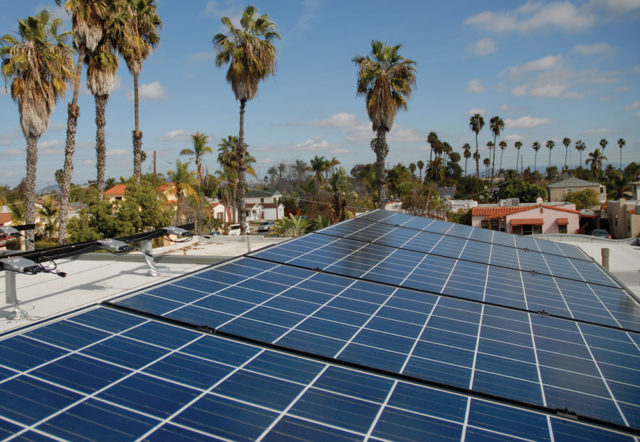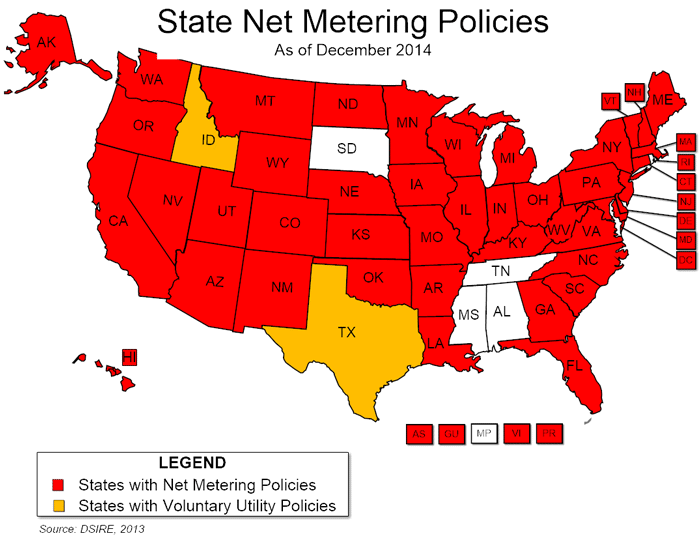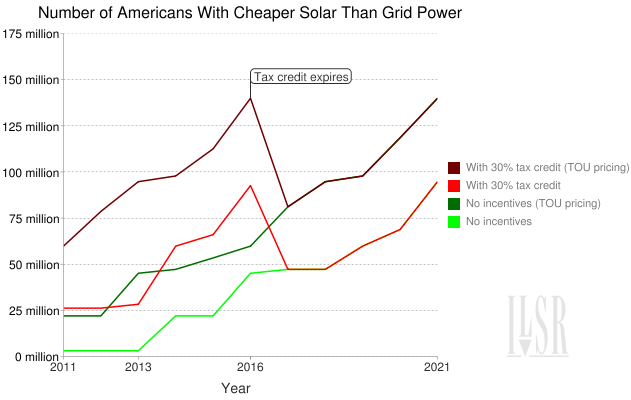
*Solarprofessional.com
Debates regarding state-level net metering policies and rates have been flaring up among electricity consumers, residential and commercial solar market companies, and utilities. All but four U.S. states had instituted net metering policies as of December 2014, via which a new breed of electricity ¨prosumers¨ are compensated for the emissions-free solar electricity they dispatch to power grids, according to the National Conference of State Legislatures.
The issue cuts across a wide range of key factors that will shape the way electricity is produced, distributed, bought, sold, and priced in the United States in coming years, including consumer choice, power market rate reform and the degree and extent of innovation, and competition in state and local energy and power markets.
Some 128 million Americans don’t have any choices when it comes to being charged for electricity based on the time of day it’s consumed. However, this model, proponents of ¨Time of Use¨ (ToU) pricing say, has been proven to reduce energy consumption and yield benefits to utilities as well as consumers.
A recently released research report from the Rocky Mountain Institute (RMI) titled “Alternative Rate Design Effectiveness” says regulators and utilities need to redesign rate schemes. RMI goes on to offer ¨long-term solutions¨ that can enable utilities, regulators, and stakeholders to design and evaluate ToU pricing schemes and demand-charge rates.
Matching consumer rate charges to load profiles
With ToU pricing, the amount consumers are charged for electricity corresponds with daily utility grid load profiles – in other words, it varies with time of use. Costs are higher for those consuming electricity during peak periods of demand and lower for those that do so during off-peak hours.

Discussion and debate regarding ToU pricing and net metering will play a big role in setting the course for U.S. socioeconomic development and environmental and public health and integrity for many years to come. The policies that result will have impacts on distributed renewable energy power generation and energy storage growth and development, as well as that for utility-consumer demand response (DR) initiatives, the path of greenhouse gas (GHG) emissions reductions, water use, and prospects for sustainable state and local economic and jobs growth.
¨California, Hawaii and, as reported Monday [May 9], New York want utility business models that look to the future, not the past,” according to Aspen-based RMI. “And notably, every utility executive speaking at the two largest energy conferences in April, Future of Energy Summit (BNEF) and ECO:nomics (WSJ), agreed that business model evolution is an urgent need.”
Rate Reform and New Business Models
Net metering and ToU pricing are two market-based mechanisms that serve as keys to grid modernization and realizing the potential benefits innovations in distributed clean energy technology afford, proponents assert. ¨Two types of alternative mass-market rate designs are often proposed to meet rapidly evolving customer needs in the near-term,¨ RMI highlights:
Two types of alternative mass-market rate designs are often proposed to meet rapidly evolving customer needs in the near-term, RMI explains:
- Time-based rates can provide more accurate price signals to customers, better reflecting the marginal cost of supplying and delivering electricity. These price signals may lead customers to change their consumption patterns to reduce both peak and total consumption.
- Demand charge rates can provide a price signal to reduce peak demand and can potentially allocate peak-driven costs more fairly. Customers may respond by changing their consumption patterns to reduce peak demand, flattening their load profile.
That said, utilities and regulators face a lot of uncertainty given the rapid rate of technological change and uptake of solar, wind, and other distributed renewable energy systems. Addressing this issue, the white paper brings together what RMI considers ¨best in class¨ examples that can be applied by any utility or regulator.
Among the cross-cutting benefits, ¨time-based rates can provide more accurate price signals to customers, better reflecting the marginal cost of supplying and delivering electricity,¨ the report authors contend. That information, in turn, can lead customers to change when and how much electricity they use so that both peak-period and total consumption are reduced. The change can also spread costs across utilities customer bases more equitably, according to RMI.
Importantly from utilities’ perspective, RMI concluded that the introduction of ToU pricing didn’t suffer from lack of utility customer acceptance in terms of enrollment and retention. RMI states:
“Empirical evidence shows that time-based rates have the potential to result in:
- Peak load reduction of 0–50%;
- Reduction in total energy consumption of 0–10%:
- Customer enrollment rates of 6–98% and retention rates of 63–98%;
- These impacts depend on key choices made in designing the rate.”

